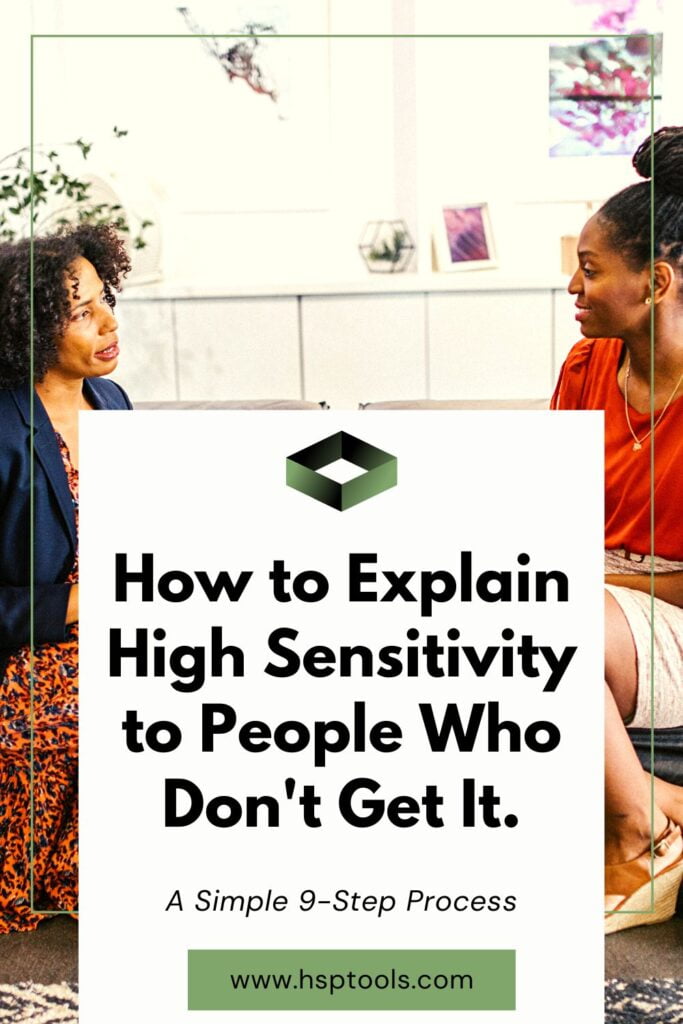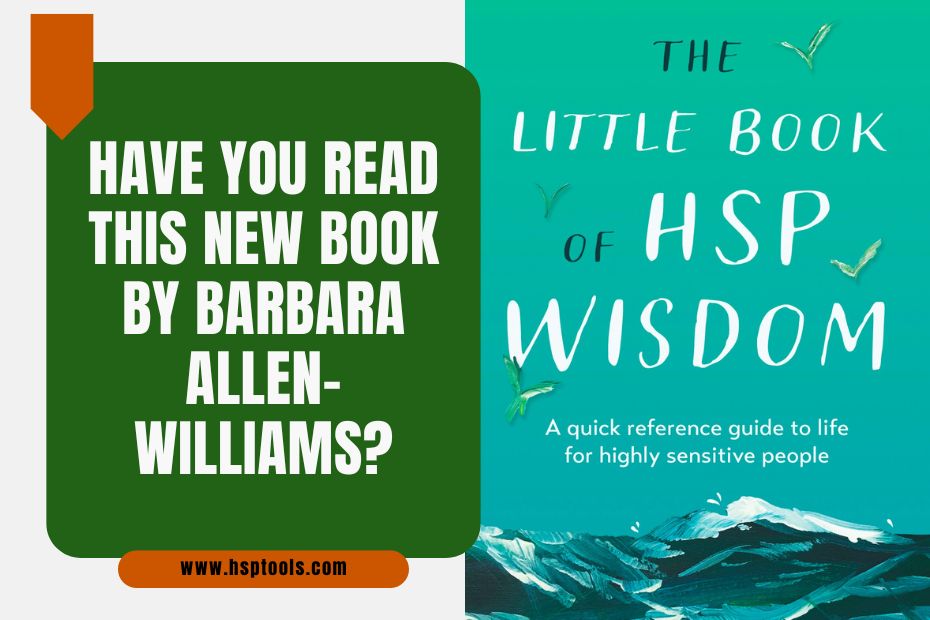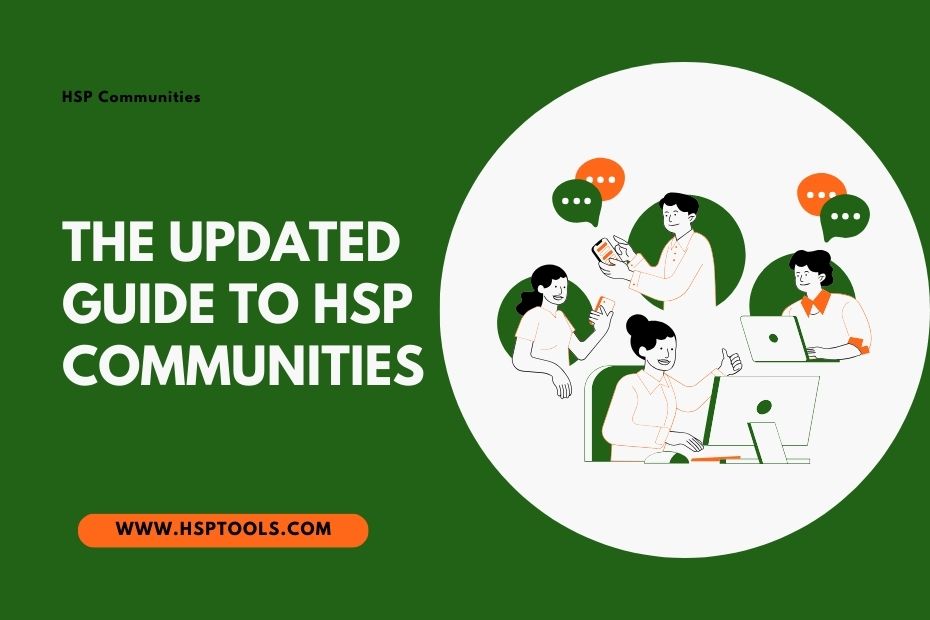9 Simple Ways to Explain High Sensitivity to People Who Don’t Get It
Exactly one week ago, on the 26th of May, 2023, I hit publish on an eBook titled The 10 Things HSP Handbook. I didn’t think anyone would want it, especially not with the many HSP resources on the internet.
But I hoped someone out there was looking for a resource with essential information about High Sensitivity and Highly Sensitive People (HSPs) in one place.
And I hoped that sharing the top ten Abbreviations, Research Studies, FAQs, Experts, Quizzes, and Additional Resources in the HSP industry would benefit someone who just learned about High Sensitivity.
I wasn’t wrong.
One week later, the $10 eBook exploring a simple way to understand High Sensitivity has received downloads in four countries. And I’m so glad I followed through with the idea amidst doubts that anyone would want it.
So if you have purchased The 10 Things HSP Handbook, thank you. I hope you are finding it helpful in your HSP journey. And if you are yet to get a copy, go here to learn more about the eBook.
And then come back to this post to learn how to explain High Sensitivity to people who don’t get it.
Let’s dive in.
This post first appeared in our Substack newsletter, The HSP Edit. Subscribe today to receive practical HSP tips and resources in your inbox.

What is High Sensitivity?
High Sensitivity is a personality trait characterized by heightened awareness and responsiveness to various stimuli. It’s scientifically referred to as Sensory Processing Sensitivity (SPS). And a person with High Sensitivity is called the Highly Sensitive Person (HSP).
According to research, 20-30% of the population is Highly Sensitive. The other 70% have either medium or low levels of Sensitivity, with those on medium levels being the majority at 40%.
Individuals with High Sensitivity have a more sensitive nervous system that processes sensory information thoroughly and at depth. And they tend to notice subtle details and nuances that others may overlook and often experience more intense emotional responses to stimuli.
Why Do You Need to Explain High Sensitivity?
To be clear, you don’t need to explain High Sensitivity to anyone. Not to your boss, partner, friend, or family member.
But some people genuinely want to learn more about the HSP trait and understand you better. And I believe these are the people to whom you should explain High Sensitivity.
So if you want a little convincing as to why you need to explain your HSP trait to the people in your life, here are five reasons:
1. To Improve Self-awareness
Recognizing and understanding High Sensitivity can lead to an increased sense of self-awareness. It can help explain unique experiences in your life, allow for a better understanding of your needs, and help you to establish healthy boundaries and develop effective coping strategies.
2. Validation and acceptance
Growing up, you may have often felt misunderstood or different. Explaining High Sensitivity to others can offer a sense of validation and help you realize that your experiences are valid and shared by others. It also promotes acceptance and helps combat feelings of isolation or being too sensitive.
3. It Builds empathy and understanding
Explaining the HSP trait will help others recognize and appreciate the challenges faced by individuals with High Sensitivity. This increased understanding can lead to more supportive and inclusive environments for people with the trait.
4. Improved relationships
When loved ones, friends, and colleagues understand High Sensitivity, they can adapt their behaviours and communication styles accordingly. And this can help prevent misunderstandings, conflicts, or unnecessary stress in relationships.
5. Advocacy and support
Raising awareness and helping others understand the HSP trait can contribute to broader societal acceptance and contribution. It can also create spaces in personal and professional settings that accommodate the needs of individuals with High Sensitivity.
And even encourage further research and resources dedicated to the trait.
How Do You Explain High Sensitivity to People Who Don’t Get It?
Explaining High Sensitivity to people who don’t experience it can be challenging. But with patience and compassion, you can help them gain a better understanding.
Here are nine steps you can take to explain High Sensitivity effectively:
1. Educate yourself
Before explaining High Sensitivity to others, ensure you understand it yourself. Read books, articles, and research papers on the subject to gather accurate information and familiarize yourself with the scientific and psychological aspects of the trait.
2. Choose the right time and place
Find a calm and relaxed environment where you can have a meaningful conversation without distractions. Ensure that you and the person you’re explaining it to have the time and mental space to engage in a thoughtful discussion.
3. Describe the concept
Start by introducing the research findings of High Sensitivity. Explain that it is an inborn trait affecting how a person processes and reacts to sensory and emotional stimuli. Emphasize that having High Sensitivity is not a disorder or a weakness; but rather a natural variation in human temperament.
4. Provide relatable examples
Sharing personal anecdotes or understandable scenarios can help the person understand what High Sensitivity feels like. Describe situations where you felt overwhelmed or emotionally affected by external stimuli that others might not have noticed or been bothered by.
And illustrate how the trait can manifest in different aspects of life, such as heightened emotional responsiveness, deep empathy, or Sensitivity to environmental factors like noise, bright lights, or crowds.
5. Address misconceptions
People who don’t experience High Sensitivity may have preconceived notions or misunderstandings about it. Clarify common misconceptions, such as the idea that High Sensitivity equates to being overly emotional or weak.
Stress that it features a range of strengths, including heightened perceptiveness, creativity, and the ability to appreciate art and beauty.
6. Express the benefits
Highlight the positive aspects of the Highly Sensitive Person (HSP) trait. Talk about the increased capacity for empathy, intuition, and the ability to notice subtleties in the environment. Explain that High Sensitivity can contribute to valuable skills such as problem-solving, creativity, and a rich inner life.
7. Acknowledge challenges
Because, like all personality traits, the HSP trait is both a strength and a weakness, it’s essential to address the challenges that High Sensitivity can present.
Discuss the potential difficulties in managing overwhelming stimuli or intense emotions. And emphasize that when Highly Sensitive People (HSPs) have self-awareness, coping strategies and a supportive environment, they can lead fulfilling and successful lives.
8. Encourage empathy and understanding
Ask the person to whom you’re explaining High Sensitivity to try and imagine how certain situations might feel for someone with the trait. Encourage them to put themselves in an HSP’s shoes and consider how they would react if they were more sensitive to stimuli.
9. Answer arising questions
The person will have questions as you explain the trait of High Sensitivity. Be open to answering any questions or concerns the person may have. Provide additional information if needed and address any misconceptions that arise during the conversation.
5 Resources to Help You Explain High Sensitivity to People Who Don’t Get It
- Watch this YouTube video by Alane Freund. It’s about understanding the Highly Sensitive Person. And at 45 minutes long, it’s one of the best resources you will find.
- Watch this Video by Julie Bjelland (It’s Free): At 12 minutes long, this video explains High Sensitivity in an easy-to-understand language. No jargon.
- Download this letter about High Sensitivity (Free): This letter is a PDF document by Julie Bjelland. It simply explains the HSP trait, and you can give it to your boss, partner, friends, or family to read.
- Get a Copy of The 10 Things HSP Handbook ($10): This eBook explores a simple way to understand High Sensitivity. It focuses on six main areas and highlights ten things you should know in every chapter.
- Read The Highly Sensitive Person book by Dr Elaine N. Aron ($15)– This is the OG of HSP resources. It shares original research on HSPs and explains how sensitive people can thrive in an overwhelming world.
- Listen to The HSP Podcast by Julie Bjelland (Free): If you are a fan of podcasts, you will love the HSP podcast. It explores discussions on different topics affecting Highly Sensitive People (HSPs).
In the End:
Not everyone will fully grasp the concept of High Sensitivity immediately, and that’s okay. It may take time to absorb the information and adjust their perspectives.
So, try to maintain patience, empathy, and open communication as you help others understand the Highly Sensitive Person.
And use the resources above as a guide when learning about the HSP trait and explaining it to your friends and family.
P.S.: This post contains affiliate links. That means I will earn a small commission when you purchase through these links. You won’t pay more than is required, and I only recommend practical and helpful resources.








